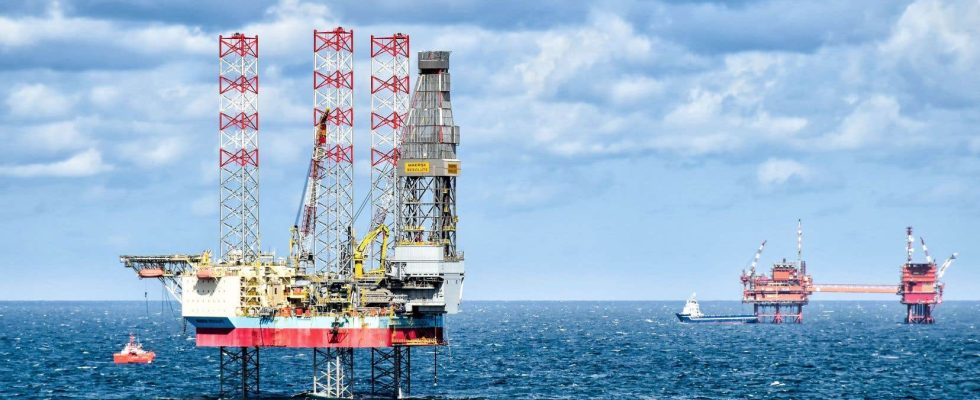The Trudeau and Newfoundland and Labrador governments have issued a call for tenders for several new offshore oil exploration licenses that would cover more than 120,000 km2. Some of these licenses encroach on the most important “marine refuge” in eastern Canada. Ottawa nevertheless asserts that this new door open to the fossil fuel industry does not compromise its desire to “fight against climate change”.
The Canada-Newfoundland and Labrador Offshore Petroleum Board (C-TNLOHE) recently published this new call for tenders for a total of 47 exploration permits from old abandoned permits or permits that have already been put up for auction, but found no takers. Some of these permits, for example, had already been offered last year in the context of a call for tenders covering nearly 100,000 km2.
A total of 28 permits covering more than 72,000 km2 are located in a vast zone of so-called “high activity” exploration, which already includes “significant discoveries” of hydrocarbons. It is also in this region that we find the Bay du Nord project, which could produce nearly a billion barrels of oil. A total of 19 other permits covering 50,000 km2 are offered in a “low activity” area.
If all the permits find takers, this would represent a very significant leap in the area of open marine environments in search of new oil deposits. We currently have a little less than 50,000 km2 permits off the east coast of Canada.
marine refuge
Companies have until 1er November to express their interest, and the permits, which will be valid for nine years, will be granted “in early 2024”. “The only criterion for selecting the successful bid will be the total amount that the bidder undertakes to spend on exploration”, specifies the organization which manages the granting of permits. The minimum amount has been set at $10 million per permit.
The Board also indicates that the area where the auction licenses are located includes “important areas” for commercial fisheries. Some also “overlap” the largest marine biodiversity protection area in eastern Canada, called the Newfoundland Northeast Slope Closure. This “marine refuge” was established in 2019 to help achieve the Trudeau government’s marine environment protection target.
According to the federal government, it is “an ecologically and biologically significant area that supports great diversity, including several declining species”. Any fishing activity “coming into contact with the bottom” is prohibited there, but the door is not closed for oil and gas drilling.
At least four more tenders are planned by 2029 in different marine areas off Newfoundland and Labrador. Following the call for tenders launched in 2022, just over 12,000 km2 new permits in the marine environment have been issued to oil companies which have committed to investing at least $238 million in exploration work over the next few years. The office of the Minister of Environment and Climate Change, Steven Guilbeault, then affirmed that Ottawa wishes to “transform Canada into the world’s cleanest oil and gas producer”.
Climate
Has Canada set itself a deadline in the years to come to stop issuing new oil exploration permits, in a context of phasing out fossil fuels? Natural Resources Minister Jonathan Wilkinson’s office did not answer the question directly.
“The Canada-Newfoundland and Labrador Offshore Petroleum Board is an independent regulator that upholds the highest standards of safety and environmental protection. A bidding process does not in itself authorize the development of the offshore area,” it was explained in a written response. Moreover, any development project would be subject to an environmental assessment.
“Canada will continue to fight climate change,” added Minister Wilkinson’s office, noting that the most recent national emissions report “confirmed that we are following the trajectories set out in the 2030 Emissions Reduction Plan”.
Andréanne Brazeau, a climate policy analyst at Équiterre, asserts that the addition of exploration projects, and possibly oil exploitation, is incompatible with the fight against the climate crisis. “The federal government hinted last year that the Bay du Nord project would be the last major project off Newfoundland and Labrador. But what we see today is that the buffet is still open. This is completely inconsistent with what science tells us,” she argues.
Équiterre launched a lawsuit last year with the Sierra Club Canada Foundation that directly targets Minister Steven Guilbeault for his endorsement of Bay du Nord. In particular, the groups dispute “the rhetoric of industry and governments” according to which the project will ultimately be “carbon neutral”. This assertion, they point out, does not take into account the use of oil.
Double production
For biologist Sylvain Archambault, of the Society for Nature and Parks of Quebec, the federal government will find it difficult to refuse future oil exploitation projects in the marine environment if ever the permits at auction make it possible to discover commercial potential.
A situation which, according to him, contradicts the need for decarbonization. “We continue to launch calls for tenders and even to auction permits that were not acquired in previous calls for tenders. Newfoundland and Labrador is still in the process of doubling offshore oil production,” he says. The province wants to double its production after 2030. This would then reach 650,000 barrels per day, or a potential of more than 237 million barrels per year.
Mr. Archambault also deplores the desire to grant new exploration permits in a marine refuge set up to protect biodiversity. If an exploitation project is authorized in the years to come, the federal government will withdraw its protection status from the portion targeted for drilling.
“We protect the sector, but only until an oil potential is discovered,” he summarizes. In early 2021, the Trudeau government authorized BHP Canada to drill 20 exploration wells in this same marine refuge. The project was submitted by the oil company two months after the creation of the marine refuge.
